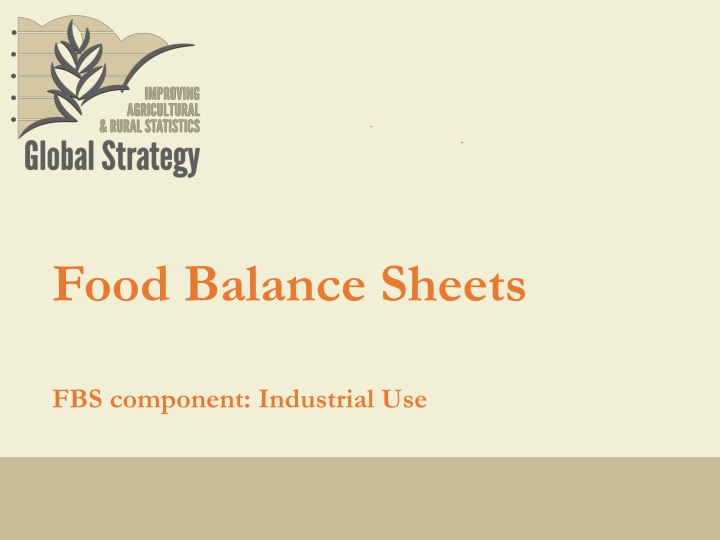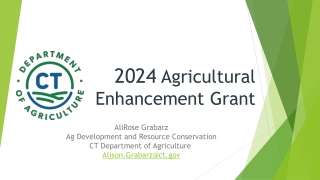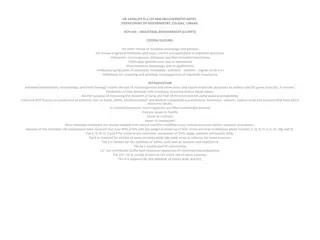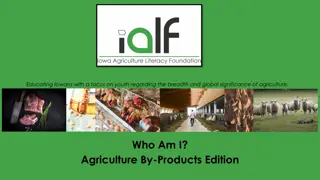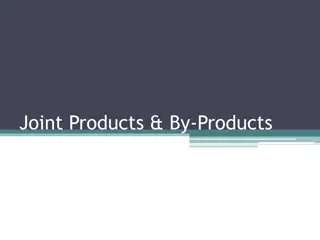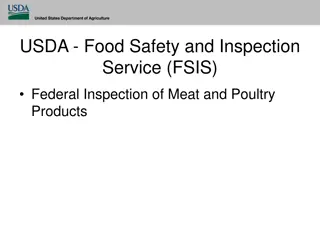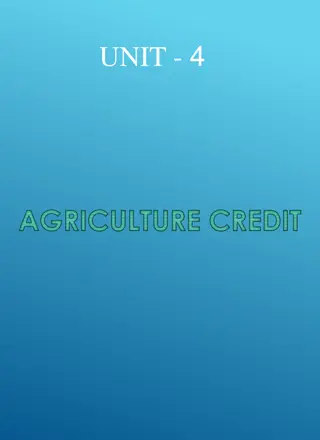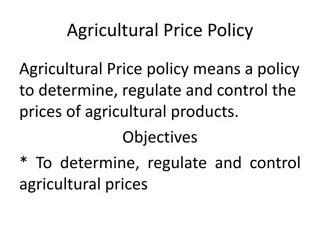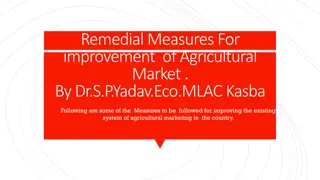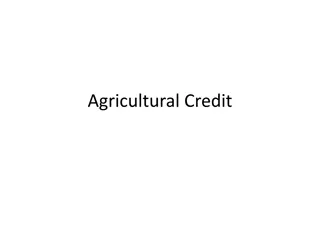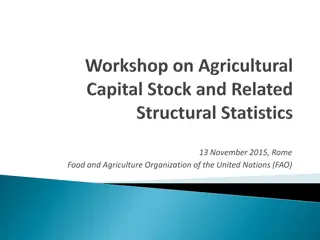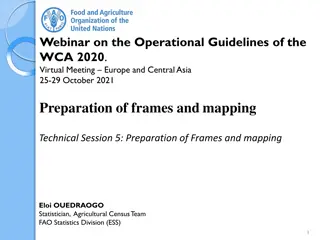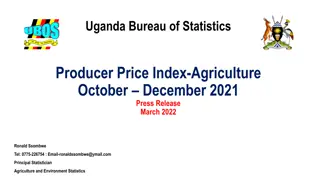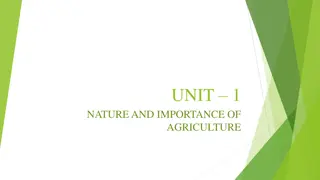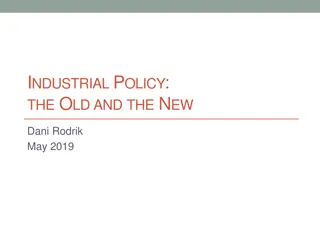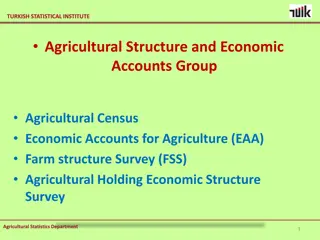Industrial Use of Agricultural Products
This session explores industrial uses of agricultural products, focusing on data sources and methodologies for imputation and estimation. It emphasizes the importance of consulting industry experts and official data sources to capture industrial utilization accurately. The session also highlights the context-specific nature of industrial uses and the need for tailored data collection approaches.
Download Presentation

Please find below an Image/Link to download the presentation.
The content on the website is provided AS IS for your information and personal use only. It may not be sold, licensed, or shared on other websites without obtaining consent from the author.If you encounter any issues during the download, it is possible that the publisher has removed the file from their server.
You are allowed to download the files provided on this website for personal or commercial use, subject to the condition that they are used lawfully. All files are the property of their respective owners.
The content on the website is provided AS IS for your information and personal use only. It may not be sold, licensed, or shared on other websites without obtaining consent from the author.
E N D
Presentation Transcript
Food Balance Sheets FBS component: Industrial Use
Learning Objectives At the end of this session, the audience will know: a) Different data sources for industrial use b) Recommended approach for Imputation and estimation of industrial use 2
Outline 1. Data sources 2. Imputation and Estimation 3
Introduction Industrial use refers to utilization of any food items in any non-food industry. Industrial uses of agricultural products have been growing over the past few decades, to a large extent driven by the expansion of the biofuels market. In Africa we have also some examples, with the case of Shea butter which is used in the local manufacture of many industrial or semi-industrial products. Industrial uses of agricultural products are very context- specific. It is not possible to provide universally-applicable advice on data sources or imputation methodologies. 4
Introduction Instead, compilers are encouraged to first seek out industry and commodity experts. Investigate which products are utilized for industrial purposes. How their use can be modeled in cases of missing data. 5
I. Data sources Official data sources Country FBS compilers are first encouraged to consult any official data sources about the possibility of industrial uses of any commodities. Countries with large industrial utilizations of certain products may collect data on the quantity or share of production that is destined for such uses in an annual statistical yearbook. If there is a large amount of industrial use of a certain product that is not captured in current official surveys, countries are encouraged to consider collecting official data on those uses 6
I. Data sources Alternative data sources For countries where no official data collection on industrial uses is currently taking place, compilers have some alternatives. In some countries, it may be possible to obtain estimates of industrial uses by accessing purchase or sales records from private agro-industrial companies. Particularly in countries where processing of a given commodity for industrial uses is concentrated in the hands of a few processors. Some estimates on industrial uses may also be obtained directly from commodity associations, who likely already consult with or get information directly from agroprocessors. 7
I. Data sources Alternative data sources In cases where industrial uses are almost entirely biofuel- related, countries may be able to use the current policy framework to assist in estimating industrial use data. In cases where none of these strategies seem feasible, countries can also consult two additional data sources: OECD/FAO medium-term outlook, which provides estimates of ethanol production, biodiesel production, and biofuel use for a selection of the world s countries. http://www.agri-outlook.org/database/. the USDA s Production, Supply and Distribution (PS&D) database estimates for Industrial Domestic Consumption of oil crops. https://apps.fas.usda.gov/psdonline/app/index.html#/app/home. 8
II. Imputationandestimation At present, there is no recommended imputation methodology for industrial uses. Partly because industrial uses tend to be strongly related to the contexts of specific commodities and countries. Compilers are encouraged to focus their efforts on consulting with commodity experts, and advocating for official data collection if industrial uses are found to be large. 9
Reference 1. 3rdchapter of the Guidelines: Data for FBS compilation: considerations, sources and imputation 3.5.9 Food Processing. 2. Technical Conversion Factors (TFC) for Agricultural Commodities 10
